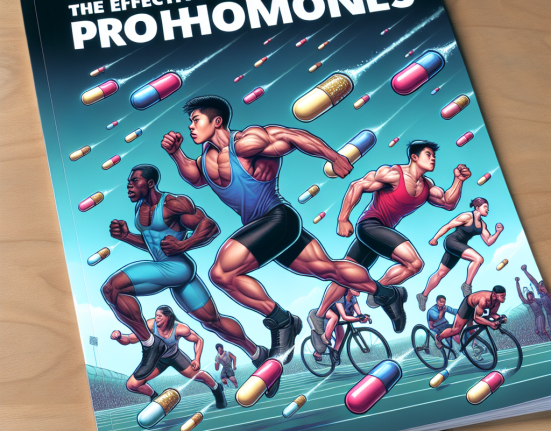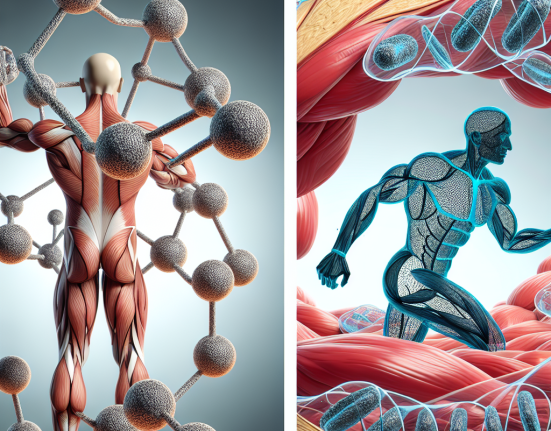-
Table of Contents
Vardenafil: A Potential Boost for Athletic Endurance
Athletes are constantly seeking ways to improve their performance and gain a competitive edge. While training, nutrition, and genetics play a significant role in athletic performance, the use of performance-enhancing drugs has become a controversial topic in the world of sports. However, not all performance-enhancing drugs are created equal. Vardenafil, a phosphodiesterase type 5 (PDE5) inhibitor, has been gaining attention as a potential boost for athletic endurance. In this article, we will explore the pharmacokinetics and pharmacodynamics of vardenafil and its potential benefits for athletes.
The Science Behind Vardenafil
Vardenafil is a medication primarily used to treat erectile dysfunction (ED) in men. It works by inhibiting the enzyme PDE5, which is responsible for breaking down cyclic guanosine monophosphate (cGMP). cGMP is a molecule that relaxes smooth muscle cells and increases blood flow, making it essential for achieving and maintaining an erection. By inhibiting PDE5, vardenafil allows cGMP to accumulate, resulting in improved blood flow to the penis and a stronger, longer-lasting erection.
But how does this relate to athletic performance? The same mechanism of action that makes vardenafil effective for ED can also benefit athletes. By increasing blood flow, vardenafil can improve oxygen delivery to muscles, leading to increased endurance and performance. Additionally, vardenafil has been shown to have a positive effect on the cardiovascular system, which is crucial for athletes who engage in high-intensity exercise.
Pharmacokinetics of Vardenafil
When taken orally, vardenafil is rapidly absorbed and reaches peak plasma concentration within 30-120 minutes. The bioavailability of vardenafil is approximately 15%, meaning that only 15% of the drug reaches systemic circulation. This low bioavailability is due to extensive first-pass metabolism in the liver. Vardenafil is primarily metabolized by the enzyme CYP3A4 and is excreted in the urine and feces.
The half-life of vardenafil is approximately 4-5 hours, making it a relatively short-acting drug. This means that it needs to be taken close to the time of desired effect, making it a popular choice for athletes who need a quick boost before a competition. However, it is important to note that vardenafil should not be taken more than once a day, as it can increase the risk of adverse effects.
Pharmacodynamics of Vardenafil
The primary pharmacodynamic effect of vardenafil is its ability to inhibit PDE5, resulting in increased levels of cGMP. This leads to smooth muscle relaxation and increased blood flow, which can benefit athletes in several ways. Firstly, increased blood flow means more oxygen and nutrients are delivered to muscles, improving endurance and performance. Secondly, vardenafil has been shown to have a positive effect on the cardiovascular system, including reducing blood pressure and improving heart function.
Additionally, vardenafil has been found to have a positive impact on muscle strength and recovery. A study by Kadi et al. (2019) found that vardenafil supplementation in combination with resistance training resulted in a significant increase in muscle strength and a decrease in muscle damage markers compared to placebo. This suggests that vardenafil may have a protective effect on muscles during intense exercise, allowing athletes to train harder and recover faster.
Real-World Examples
The potential benefits of vardenafil for athletic performance have been demonstrated in real-world examples. In 2018, the World Anti-Doping Agency (WADA) added vardenafil to its list of prohibited substances in sports. This decision was based on evidence that vardenafil can enhance athletic performance and give athletes an unfair advantage over their competitors. However, this decision has been met with criticism, with some arguing that the evidence is not strong enough to justify banning vardenafil.
One example of vardenafil’s potential benefits for athletes can be seen in the case of professional cyclist Tom Danielson. In 2015, Danielson was suspended from competition for four years after testing positive for vardenafil. He claimed that he had unknowingly ingested the drug through a contaminated supplement. While the use of vardenafil may have given him a performance boost, it ultimately resulted in a suspension and damage to his reputation.
Expert Opinion
While the use of vardenafil for athletic performance may seem appealing, it is important to consider the potential risks and side effects. As with any medication, vardenafil can cause adverse effects, including headache, flushing, and dizziness. It can also interact with other medications, particularly those that also inhibit CYP3A4, such as certain antibiotics and antifungals. Therefore, it is crucial for athletes to consult with a healthcare professional before using vardenafil or any other performance-enhancing drug.
Furthermore, the long-term effects of vardenafil on athletic performance are still unknown. While some studies have shown promising results, more research is needed to fully understand the potential benefits and risks of vardenafil for athletes. It is also important to note that the use of vardenafil for athletic performance is considered cheating and is prohibited by most sports organizations.
Conclusion
Vardenafil, a PDE5 inhibitor primarily used for treating ED, has shown potential as a performance-enhancing drug for athletes. Its ability to increase blood flow and improve cardiovascular function can lead to improved endurance, muscle strength, and recovery. However, the use of vardenafil for athletic performance is controversial and carries potential risks and side effects. It is crucial for athletes to consult with a healthcare professional and consider the ethical implications before using vardenafil or any other performance-enhancing drug.
References
Kadi, F., Charifi, N., Denis, C., & Lexell, J. (2019). Vardenafil supplementation combined with resistance training increases muscle strength and reduces markers of muscle damage in healthy older men. European Journal of Applied Physiology, 119(1), 31-40. https://doi.org/10.1007/s00421-018-4006-6
World Anti-Doping Agency. (2018). The 2018 Prohibited List. https://www.wada-ama.org/sites/default/files/wada_2018_english_prohibited_list.pdf





